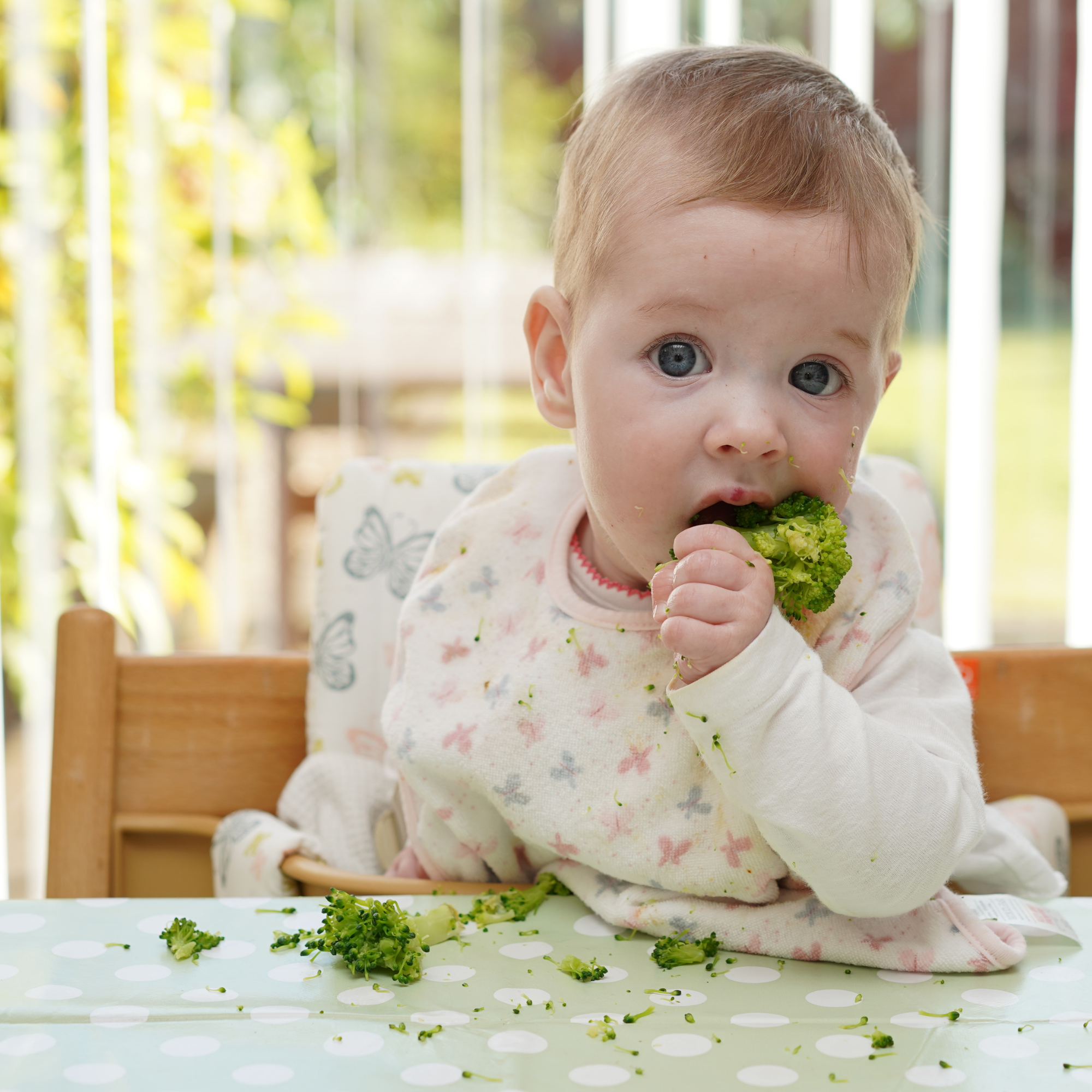5 common questions about BLW
Baby-Led Weaning (BLW) is a popular method among parents to introduce children to solid foods. In this blog post, we answer 5 common questions about BLW.
Instead of a 6-month-old baby starting with purees, BLW would mean they start with finger foods or sliced foods so the child can eat and explore with mouth and fingers. BLW focuses on the child's independence and the parent's responsiveness.
Can I combine BLW with purees?
Many people use BLW to skip purees and go straight for solid food, while some combine finger foods with purees. Exploring different textures is part of the development and food journey for kids. With BLW, the most important thing is that self-feeding is in focus. As adults, we also eat foods with different textures. There is no right or wrong way of doing it here. The main thing is to be sensitive to the child's needs and preferences.
When can my child start with BLW?
Most children are ready to start with solid foods from around 6 months of age, but not necessarily with finger foods. Before starting to offer the child solid foods, it is important that it has reached the following developmental stages:
The child is 6 months or older
The child can sit without support
The child can keep its head upright and steady
The child can pick up objects and bring them to the mouth
The child is interested in food or leans forward towards it
Which food is best to start with?
For children between the age of 6-12 months, you want to focus on providing foods packed with nutrition, energy and iron. The first 1000 days for children lay the foundation for lifelong health. The food served needs to have a soft texture and be cut so that the size and shape are adapted to the child's age.
Does the child need teeth to start with solid food?
No. This is a common misconception. Babies can chew and mash food with their gums, tongue and jaws even though they don’t have teeth. But be sure to keep track of foods that pose a greater risk of suffocation and avoid them.
What is the difference between choking and gagging?
Gagging when you have just started with BLW is very common. But it's easy to mistake it for choking. Gagging is when the vomiting reflex is activated because food has ended up far back in the mouth. When the child is small, the reflex sits far in front of the tongue and then moves further back. If the child gets starts to gag, try to let the child get the food out on their own without sticking your fingers in their mouth, which can make things worse. Breathe and count to 3 before reacting strongly and potentially scaring the baby.
Choking is when the airways are blocked and signs that this is happening are: that the child can not cry, has difficulty breathing, that the lungs are pulled inwards, make loud noises or may change the hue of the body.
If you are curious and want to try BLW here are some sources we recommend:
babyledweaning.com
parents.com/baby/feeding/solid-foods/dos-and-donts-of-baby-led-weaning/
solidstarts.com/baby-led-weaning/faqs-baby-led-weaning/
